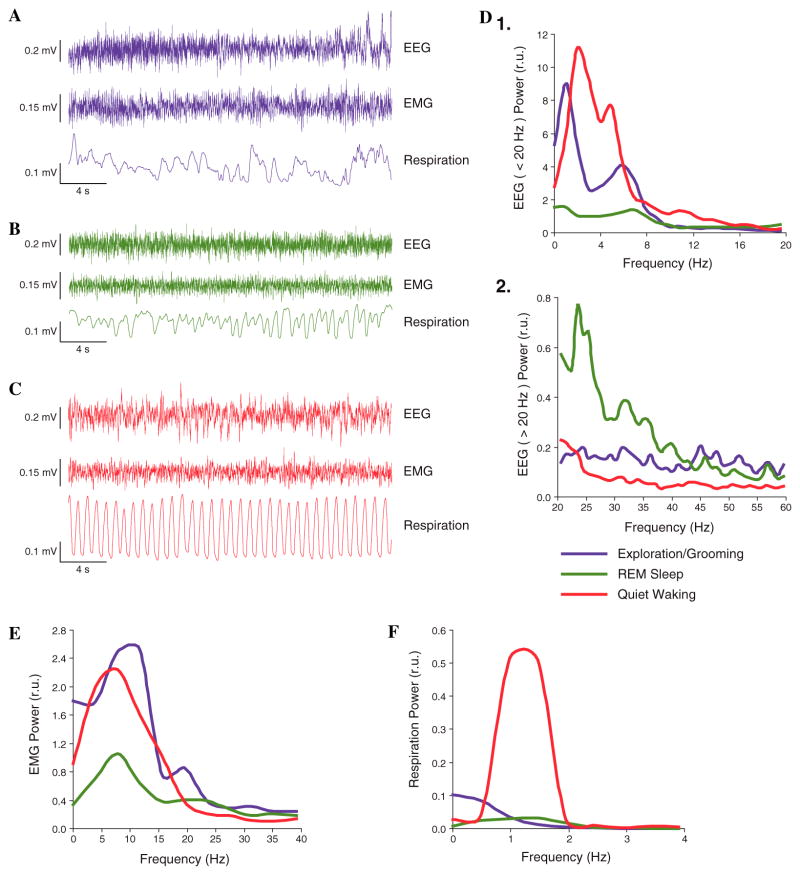Fig. 2.
State control. Examples of physiological measures for three major states. Training trials were given only when subjects were in the state of Quiet Waking (supine posture, eyes open, video monitoring). (A) Exploration/Grooming: note in particular irregular respiration. (B) REM sleep, characterized by low voltage, fast EEG, low level of EMG activity and rapid, shallow respiration. (C) Quiet Waking, distinguished by highly regular respiration. (D, E, and F) Spectral analyses of physiological indices of the examples given in (A, B, and C). REM sleep was distinctive from Exploration/Grooming and Quiet Waking in (D) EEG spectra having (1) less low frequency and (2) greater high frequency activity and (E) lower level of EMG. Quiet Waking was distinguished from Exploration/Grooming and REM sleep particularly by (F) highly regular respiration, with maximum power at ~1.3 Hz.

